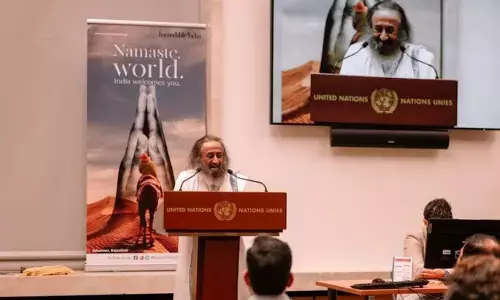Feeling stressed or tired? Try listening to the sounds of nature to improve your mood

Psychologists have discovered that sounds of nature played back even from a recording aid in recovery of a positive mood after going through a negative experience. The total run length of the natural sound investigated was 3 minutes, and the results were compared to hybrid or completely man-made sounds.
Psychologists have discovered that sounds of nature played back even from a recording aid in recovery of a positive mood after going through a negative experience. The total run length of the natural sound investigated was 3 minutes, and the results were compared to hybrid or completely man-made sounds. As measured by a metric called the “Brief Mood Introspection Scale” (BMIS), participants who had listened to the natural sounds showed greater mood recovery than those exposed to the hybrid sounds.
.jpg)
Natural visual scenes are known to counteract negative effects of stress, cognitive fatigue, and physical conditions. But there has been much less work on the impact of natural sounds on restoration to a healthy state.
The researchers recruited 133 participants who were shown a disturbing 3 minute video depicting human hand surgery. In the video, close up footage shows a hand cut open by surgical tools to expose tissue beneath the skin. The video was deemed more intensely disturbing than that used in prior work on sound-based mood restoration. The participants were then made to listen to 4 types of recordings after the video: natural sounds only recorded by the United States National Park Service, natural sounds mixed with human voices, natural sounds mixed with motorized noise, and a control condition which featured no noises.
Before and after watching the video, as well as after listening to the recording, readings of mood were recorded according to the score on a BMIS assessment. The researchers showed that the baseline (before the video) BMIS mood readings were statistically indistinguishable between the four groups, and furthermore, after watching the video all groups showed worsening of mood in a statistically significant way.
The researchers then checked whether the BMIS readings after listening to the recording were different from those taken before the video. Remarkably only in the group that listened to the fully natural recording showed recovery of BMIS to baseline levels in a statistically significant way. The other three groups showed no statistically significant changes after listening to the recording.
The authors remark that a technological substitute may have different effects from a real, ecological setting. In fact, it is expected that the effect would be stronger. On the other hand, not all natural sounds will have a restorative effect, for example, sounds of predatory animal calls or violent natural phenomena like thunderstorms. The authors also openly wonder of whether pleasant, benign man-made sounds such as singing or laughter might have a similarly positive effect.
Finally, the authors suggest that biomarkers such as stress hormone levels and skin conductivity would truly quantitate biological effects and give a biochemical basis to the BMIS scores.
The research was performed by researchers at the Pennsylvania State University. The primary author is Professor Jacob A. Benfield. The senior author is Professor Joshua Smyth.
Next Story

















